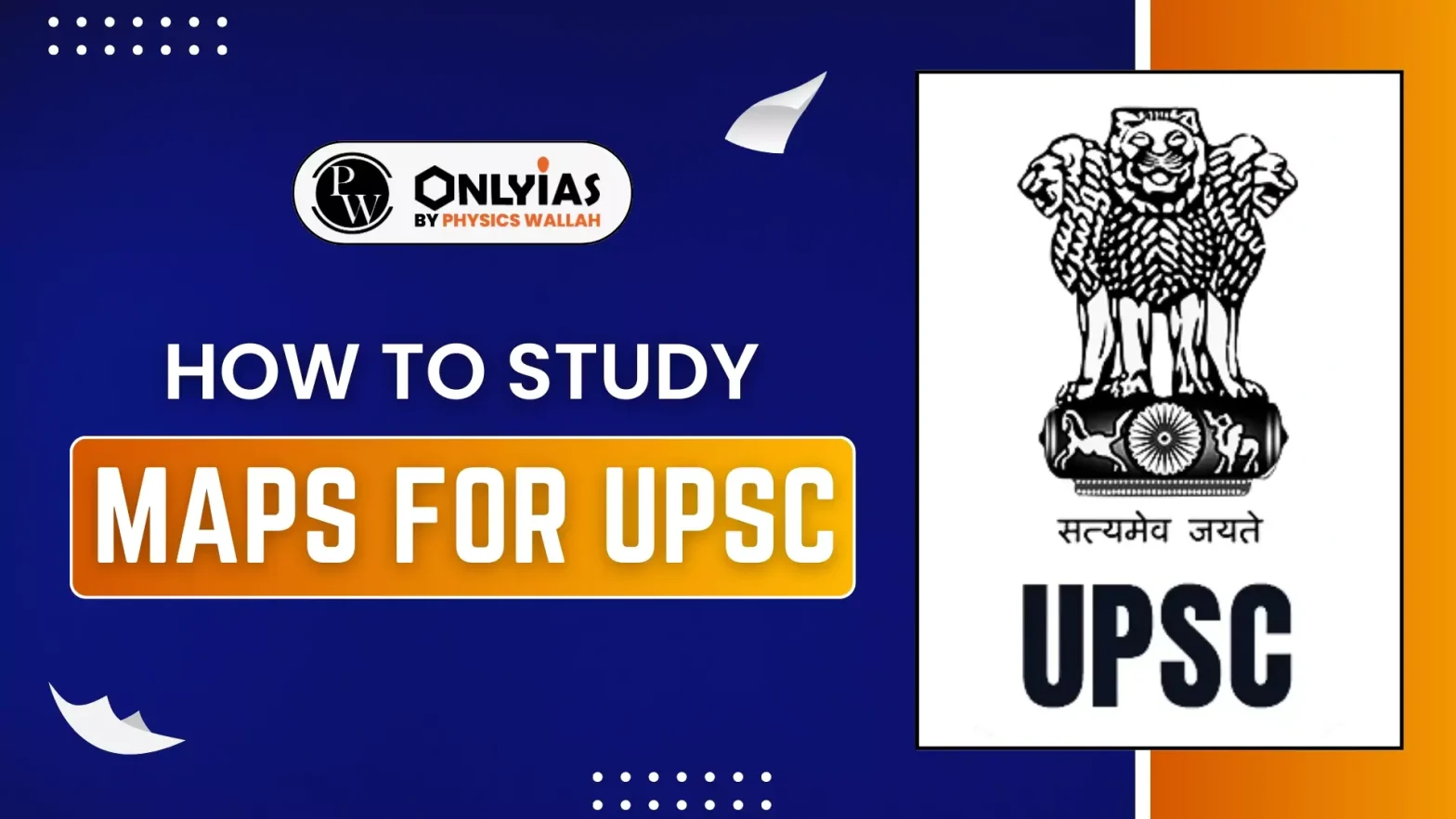Mastering how to study maps for UPSC is essential for qualifying for the exam. Learn how to study maps for UPSC with effective tips for India and world maps.

How To Study Maps For UPSC: Maps play an integral role in the UPSC Civil Services Examination, especially in the Geography paper. The ability to interpret and analyse maps is critical for prelims and the mains exam. Candidates must identify important physical features and understand geopolitical boundaries. In this comprehensive guide, we will discuss how to study maps for UPSC, the role of maps in the examination, and some effective strategies to improve your map-reading skills.
Maps are crucial to the various stages of the UPSC exam. In the Prelims Examination, map-based questions generally appear in the Geography section of the General Studies Paper I. These questions often revolve around world and India maps. Similarly, maps are essential for the Geography optional subject and GS Paper I in the Mains exam, where questions demand that you draw and explain maps.
After realizing the importance of maps, aspirants must know how to study them effectively for the UPSC IAS exam.
Every year, around 4 to 5 questions are directly related to map-based topics in the UPSC Prelims. These questions are factual and ask about the locations of rivers, cities, mountains, or countries. In the Mains, the number of questions can vary, but maps play an important role in geography, and candidates are often required to draw world or India maps to explain certain phenomena.
Studying maps for the UPSC Exam can be difficult and intimidating for candidates, but with the right approach, it can become easy and enjoyable. Here are some proven techniques for studying maps for the UPSC IAS exam.
The first step a candidate should take is to go through the syllabus and understand the topics where maps are important. Physical geography topics like mountains, rivers, deserts, and oceans require map knowledge. In international relations, focus on countries, capitals, neighbouring nations, and conflict regions.
First of all, start map preparation with the physical features of India and the world. Key areas include:
Studying these physical features provides the candidates with the foundation for understanding environmental processes and human activities.
Candidate should list countries and their capitals, especially in geopolitically important regions like the Middle East, South Asia, Africa, and Europe. This will help the candidates in international relations topics as well as map-based questions in prelims and mains.
An effective way to study the maps is to practice drawing them. This will especially help the candidates when explaining a geographical phenomenon or international issue in the main exam. Candidates don’t have to draw detailed maps but focus on the outline and key features.
Candidates utilize the technology to enhance their map learning. Google Earth, interactive map apps, and UPSC-specific geography apps can help candidates visualize locations. Atlases like Oxford or Orient Blackswan provide detailed maps, which are helpful for both prelims and mains preparation.
One of the best strategies for studying maps for UPSC is to connect trending news and current affairs with maps. When you read about international conflicts, climate change, trade deals, or environmental issues, it is advisable for the candidates to refer to a map to understand the location.
For example:
This practice will help candidates retain information better and improve their understanding of the global geopolitical landscape.
Candidates should review previous years’ UPSC papers and solve all the map-based questions. This will provide an idea of the kind of map-related questions UPSC asks. Identify the recurring themes and topics, and focus on those.
The world map is important for both prelims and mains, as many questions require knowledge of global geography, geopolitics, and international relations. Here’s a structured approach to studying the world map for UPSC.
By marking these features, candidates can easily answer questions related to trade routes, climate, and international relations.
| Click Here To Know More on How to Study World Map for UPSC |
| Link |
For Indian geography, it’s essential to learn all aspects—physical, political, and cultural. Here is a quick guide on how to learn India map in easy way:
Understanding how to study maps for UPSC is vital for effective exam preparation. By focusing on physical and political geography, regularly practising map drawing, and linking maps with current affairs, candidates will strengthen their geographical knowledge and improve their chances of scoring well in the exam. Whether candidates are wondering how to draw world map or how to learn India map in easy way, consistent practice and strategic study are key to mastering maps for the UPSC IAS exam.
Sign up for the PWOnlyIAS Online Course by Physics Wallah and start your journey to IAS success today!
| Related Articles | |
| UPSC Syllabus | UPSC Exam Pattern |
| UPSC Interview Question | UPSC Interview Dates |
| UPSC Mains Previous Year Papers | UPSC Mains GS Paper Exam Analysis |
Focus on both India and world maps, study physical features, practice regularly, and link maps with current affairs for better retention.
Maps help answer geography, current affairs, and international relations questions by providing visual and spatial understanding of locations.
UPSC Prelims typically include 5–6 map-based questions, while Mains require drawing and interpreting maps in Geography and GS papers.
Break it down regionally, learn about countries and physical features, and focus on important geopolitical areas to ace world map-based questions.
Divide the map into regions, memorize rivers, mountains, and cities, and practice outlining quick recall in the exam.

<div class="new-fform">
</div>